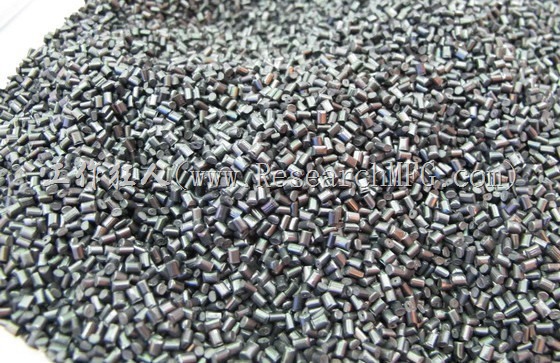
When discussing whether using re-grind resin in plastics leads to degradation, Workingbear sought advice from industry experts. Most professionals agreed that it does cause degradation. However, opinions on whether MFI values can reliably indicate the presence of re-grind resin are divided within the industry. The conclusion? It’s uncertain but worth considering. Below is a summary of the information compiled by Workingbear.
From a technical perspective, MFI (Melt Flow Index) represents the flow rate of melted plastic, which is determined by the size and entanglement of molecular chains. Theoretically, for thermoplastics, repeated heating and cooling cycles should not alter the molecular chain size, meaning MFI values should not significantly change.
However, this assumption is based on several conditions:
-
The re-grind resin must come from the same plastic material as the virgin resin (ideally from the same batch and manufacturer). It’s typically re-grinded from sprues or runners of virgin material.
-
No additional additives or impurities should be introduced into the re-grind resin.
-
The re-grind resin must be stored in suitable conditions, avoiding exposure to sunlight (UV degrades plastic properties) and moisture.
-
The injection molding machine’s screw should not excessively damage the original long polymer chains during the molding process.
Why Do People Believe MFI Can Indicate Re-grind Resin?
Several points support the idea that MFI may reveal whether re-grind resin has been used:
-
The leadscrew in the injection molding machine can shear and break long polymer chains while pushing the molten plastic forward. The more times the plastic is remelted, the shorter its molecular chains become, leading to higher MFI values.
-
Storage conditions for re-grind resin are often poor. It’s common to see re-grind materials (sprues or runners) left outdoors, exposed to wind, sunlight, and rain, which severely degrade their properties.
-
Some re-grind resin may come from compounding or dyeing processes. Black plastic pellets, in particular, may include re-grind materials from various manufacturers or even plastics with different properties. In such cases, it becomes hard to determine whether MFI values will increase or decrease, but based on experience, MFI values generally rise.
Interestingly, when comparing the same batch of plastic material, the MFI value of molded products that are later crushed and reprocessed tends to be 20–50% higher than the original virgin resin before injection molding. The extent of this difference often depends on the manufacturing process and the integrity of the injection molding facility.
(These observations are based on personal research. Feel free to leave comments or start a discussion if you have questions!)
Additional Information:
Plastics can be broadly divided into two categories:
-
Thermoplastics: These materials are typically granular at room temperature. When heated to a specific temperature, they melt and can be molded. Once cooled, they solidify, and if reheated, they melt again, allowing repeated processing. This means thermoplastics are recyclable and can be used to produce re-grind resin. Common engineering-grade thermoplastics include PC, Nylon, POM, PMMA, and LCP.
-
Thermosets: These materials become solid when heated to a specific temperature, and further heating does not alter their state. Thermosets cannot be reheated and remolded, so their waste is not recyclable.
According to UL standards (e.g., UL746D), the recommended maximum percentage of re-grind resin is 25%. However, UL primarily addresses fire safety and does not guarantee mechanical properties. To ensure both safety and quality, it is generally advisable to keep the re-grind resin content below 10%.
Related Posts:







Leave a Reply